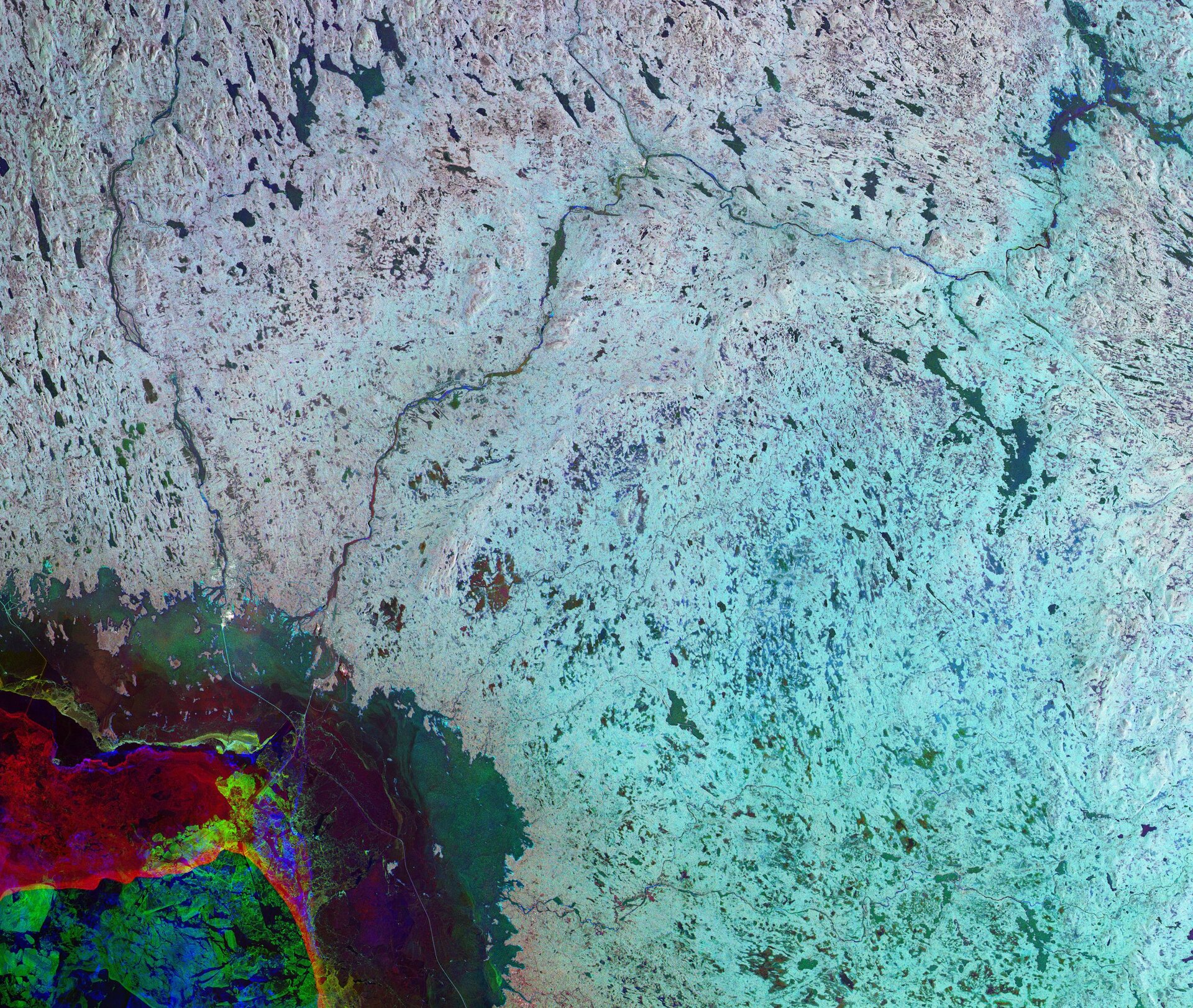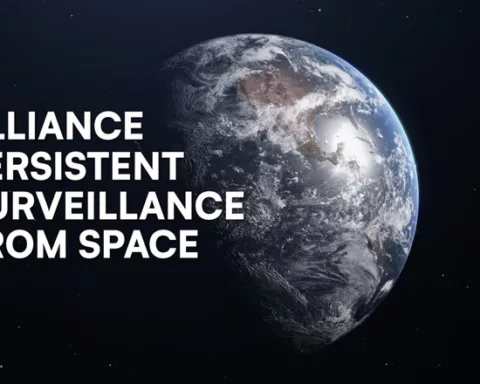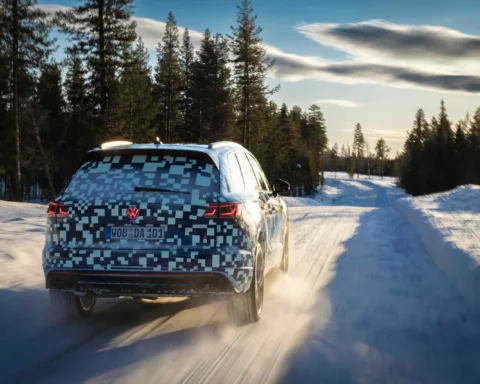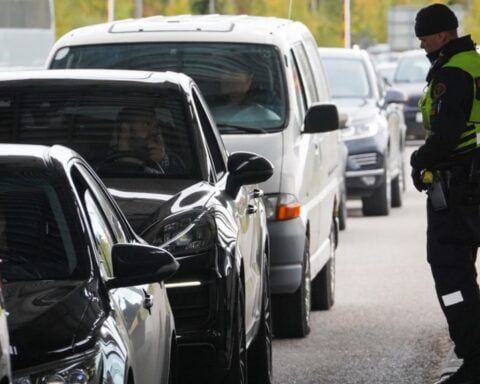Located within the Arctic Circle, Lapland, also called Sápmi by the Sami people, stretches across northern Norway, Sweden and Finland, and into the Kola Peninsula of Russia. It is bound by the Norwegian Sea on the west, the Barents Sea on the north, and the White Sea to the east.

Lapland during the winter months means snowfall, temperatures well below zero degrees and the Northern Lights, or the Aurora Borealis, lighting up the dark, night skies. Rovaniemi, the capital of Lapland, lies at the top of the image, and is considered the official hometown of Santa Claus.
In Rovaniemi, the Arctic Circle runs through Santa Claus Village, located eight kilometres north of the city centre. The Arctic Circle marks the southernmost latitude where the sun can stay continuously below or above the horizon for 24 hours – these phenomena are known as the Midnight Sun in the summer and the Polar Night in the winter.
This image combines three radar acquisitions from the Copernicus Sentinel-1 mission to show changes in land conditions over time. The first image from 28 February 2019 is associated with green, the second from 11 March is linked to red, and the third from 04 April depicts changes in blue.
The changes that took place over time in this image are largely seen in the bottom-left of the image, where sea ice in the Gulf of Bothnia has shifted substantially along the coast. The Gulf of Bothnia, the northernmost arm of the Baltic Sea, is situated between Finland’s west coast and Sweden’s east coast. As it receives the water of so many rivers, including the Torne and Kemijoki rivers visible in the image, its salinity is extremely low, and ice cover is maintained for up to five months during the winter.
There are many small islands, making navigation in the gulf difficult. For this reason, vessels travelling in the gulf receive icebreaker assistance on their journey in the ice-covered waters, and follow the straight lines easing their navigation. Straight lines can be seen coming from the Port of Röyttä and the Port of Ajos.
As an advanced radar mission, Copernicus Sentinel-1 can image the surface of Earth through cloud and rain and regardless of whether it is day or night – making it an ideal mission to monitor areas often shrouded in darkness like the polar regions.
This image is also featured on the Earth from Space video programme.





